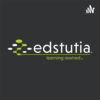William of Ockham, a 14th-century logician and theologian, is credited with developing the principle of Ockham’s razor, otherwise known as the law of parsimony — the idea that when comparing two approaches, all other factors being equal, the simpler explanation is more likely to be better.
Astrophysicist Mario Livio takes a similar perspective. Livio, who is using the Hubble Telescope to peer into the universe and unlock secrets that will define the playing field for the next generation of scientific thought, says that elegant solutions are simple, memorable and beautiful. It strikes me that these three are indeed the criteria for great ideas — including those about learning and development.
1. Make ideas simple. As a CLO, one of your core responsibilities is to create simple strategies, solutions and systems that provide access to ideas that build workforce capability. Too often, what passes as a learning strategy is an overcomplicated collection of fragmented pieces residing in an LMS. When did you last perform an audit regarding the degree to which your learners find it easy to use your learning system and understand why the pieces within it are there? Do they understand how these pieces fit together and how they can use them to solve the challenges they currently face, as well as those that they must be able to master to progress in their careers? Do they feel a part of the creation of the system, and are they able to add to it in a simple manner? Are you capturing the tacit knowledge resident in your organization?
It is important also to note that while you must simplify the system, the content need not be overly simplistic. As Einstein once said: “Make it as simple as possible, but no simpler.” When it becomes simpler than it should be, it becomes trivial, superficial and a waste of time. Acting on the truthful feedback from your users is the key to ensuring that your offering is both clear and consequential. These are human issues, not merely systems issues, and they form an agenda that you personally must drive.
2. Make ideas memorable. Most of us remember almost nothing from all the hours we spent in classes. Learning professionals agree that we have placed far too much emphasis on learning events and far too little on what is remembered and used afterward.
The increasing emphasis on measurement that has been such a prominent part of learning practice over the past decade is an encouraging start, but it’s only the beginning. The most important work in learning measurement has taken place in the so-called “yield” area of measuring learning outcomes. Our focus must remain on what is of lasting value to the learner and to the organization from the investment in learning and development. The key questions are: What capability has been built, and in what tangible ways has the organization benefited from the learning investment? A fundamental part of answering that question goes beyond traditional measurement and considers how beauty makes things memorable.
3. Make ideas beautiful. You are probably nodding your head in agreement with the first two criteria. Who can argue with making learning simple and memorable? But what has beauty got to do with it?
Scientific studies reveal that the innately positive response to symmetry in the human face and body is a universal phenomenon that is present at the earliest ages and is independent of gender, culture or ethnicity. But our positive response to beauty goes beyond the appeal of a pretty face.
Livio is among a host of scientists and mathematicians who extol the trilogy of truth, beauty and learning. Consider how mathematicians describe an elegant solution. It is:
- Succinct.
- Based on new insights.
- Easily generalized to solve a family of similar problems.
- Useful in making connections between seemingly unrelated elements.
- Surprising in the way it derives results.
- Visually as well as logically pleasing.
- Proven by multiple independent methods.
In 1987, an engineer named Bill Smith used a similar list to order ideas regarding quality engineering. He started with a beautifully and symmetrically shaped normal distribution and from it he derived a learning process you might recognize as Six Sigma.
As you think about your learning strategy and curriculum, consider the mathematician’s perspective.
Fred Harburg is a private consultant, writer and speaker in the disciplines of leadership, strategy and performance coaching. He has held numerous international leadership roles at IBM, GM, Motorola and Fidelity Investments. He can be reached at editor@clomedia.com.















